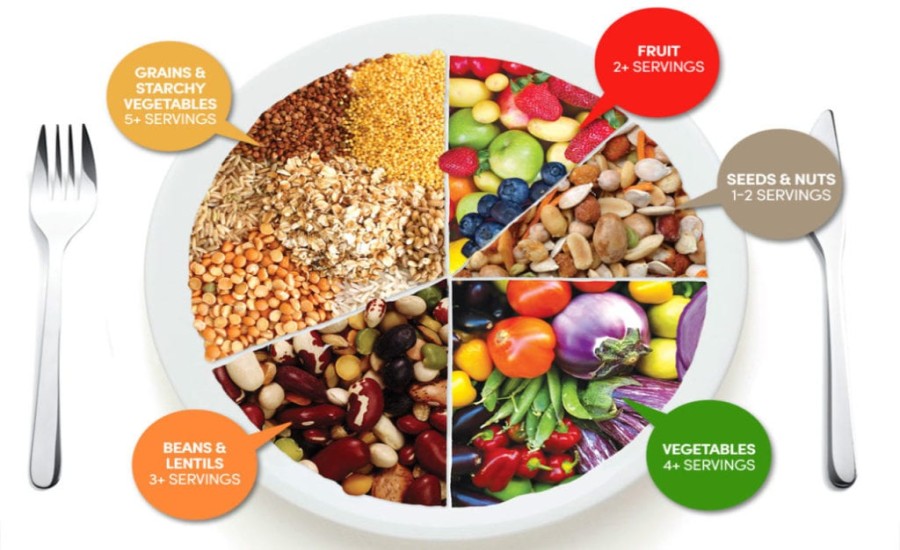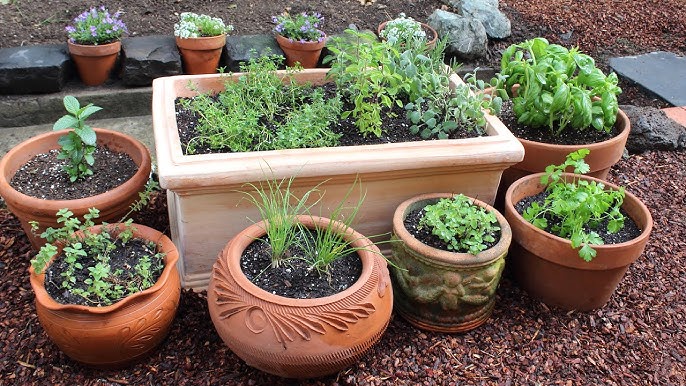In recent years, the whole-food plant-based (WFPB) diet has gained popularity as a sustainable, healthy, and compassionate lifestyle choice. The diet focuses on consuming whole, unprocessed plant foods and eliminating or minimizing animal products and processed foods. In this guide, we’ll explore the core principles of a whole-food plant-based diet, its numerous health benefits, and provide practical tips for making the transition to a healthier, more sustainable way of eating.
What is a Whole Food Plant-based Diet?
A whole-food plant-based diet is a way of eating that focuses on consuming whole, unprocessed plant foods, such as fruits, vegetables, whole grains, and legumes. The diet emphasizes the consumption of foods that are grown from the earth, rather than those that are manufactured or processed.
The Core Principles
-
Eat foods grown from the earth: This means focusing on whole, unprocessed plant foods, such as fruits, vegetables, whole grains, and legumes. These foods are packed with essential nutrients and provide the foundation for a healthy diet.
-
Focus on fruits, vegetables, grains, and legumes: These four food groups form the basis of a WFPB diet. They provide a wide range of vitamins, minerals, and phytonutrients that are essential for optimal health.
-
Minimize or avoid processed foods: Processed foods are often high in unhealthy fats, sugars, and sodium, and can contribute to chronic diseases such as obesity, heart disease, and diabetes. By minimizing or avoiding processed foods, you can improve your overall health and well-being.
-
No animal products: A WFPB diet eliminates or minimizes the consumption of animal products, such as meat, dairy, and eggs. This is not only better for your health but also supports environmental sustainability and animal welfare.
Why Choose Whole-Food Plant-based Diet?
There are many reasons to choose a whole-food plant-based diet, including:
-
Improved health and energy: A whole-food plant-based diet is rich in vitamins, minerals, and fiber, which can help improve overall health and energy levels. Studies have shown that a plant-based diet can lower the risk of chronic diseases, such as heart disease, type 2 diabetes, and certain cancers.
-
Supports environmental sustainability: A plant-based diet requires fewer resources, such as water and land, than a diet that includes animal products. By choosing a WFPB diet, you can reduce your environmental footprint and support sustainable food practices.
-
Ethical considerations for animals: Many people choose a WFPB diet for ethical reasons, as it eliminates or minimizes the consumption of animal products. This supports animal welfare and reduces the demand for factory farming practices.
The Health Benefits: What the Science Says
A whole-food plant-based diet has been shown to have numerous health benefits, including:
-
Lowering disease risk: Studies have shown that a WFPB diet can help lower the risk of chronic diseases, such as heart disease, type 2 diabetes, and certain cancers. This is due in part to the high intake of antioxidants, fiber, and other nutrients found in plant foods.
-
Statistic: According to the World Health Organization, heart disease remains the leading cause of death globally. However, dietary changes, such as adopting a WFPB diet, can significantly impact this.
-
Weight management and gut health: The high fiber content of a WFPB diet can help promote fullness and support a healthy gut microbiome. This can lead to improved weight management and overall digestive health.
Expert Insight: Dr. Michael Greger, a renowned nutrition expert and founder of NutritionFacts.org, states, “The healthiest diets are the ones that are most nutrient-dense.” A WFPB diet provides a wide range of essential nutrients and can help support optimal health and well-being.
Building Your Whole Food Plant-based Diet Plate
To create a well-rounded WFPB plate, focus on the following essential food groups:
-
Fruits: Incorporate a variety of fruits into your diet, such as berries, apples, bananas, and citrus fruits. These are packed with vitamins, minerals, and antioxidants that can help support optimal health.
-
Vegetables: Fill your plate with a variety of vegetables, such as leafy greens, broccoli, carrots, and sweet potatoes. These are rich in fiber, vitamins, and minerals, and can help support a healthy gut microbiome.
-
Whole Grains: Choose whole grains, such as oats, quinoa, brown rice, and barley, over refined grains. Whole grains are rich in fiber, vitamins, and minerals, and can help support healthy digestion and weight management.
-
Legumes: Include legumes, such as beans, lentils, peas, and tofu, in your diet. These are excellent sources of plant-based protein, fiber, and other essential nutrients.
-
Nuts & Seeds: Incorporate a moderate amount of nuts and seeds, such as almonds, walnuts, chia seeds, and flaxseeds, into your diet. These are rich in healthy fats, fiber, and other essential nutrients.
Sample Meal Ideas
Here are some simple meal ideas to help you get started on a WFPB diet:
-
Breakfast: Start your day with a bowl of oatmeal topped with berries and a handful of nuts.
-
Lunch: Enjoy a hearty lentil soup with a side salad.
-
Dinner: Prepare black bean burgers on whole-wheat buns, served with roasted vegetables.
Practical Tips for Success
Transitioning to a whole-food plant-based diet can seem daunting, but there are several practical tips you can follow to make the process smoother:
-
Transitioning Smoothly: Start by incorporating one plant-based meal a day, and gradually increase the number of plant-based meals as you become more comfortable with the diet.
-
Swap out one food group at a time: Rather than trying to overhaul your entire diet at once, focus on swapping out one food group at a time. For example, start by replacing meat with plant-based protein sources, such as legumes and tofu.
-
Find easy WFPB recipes: There are countless WFPB recipes available online, many of which are simple and easy to prepare. Find a few recipes that appeal to you and start experimenting in the kitchen.
-
Actionable Takeaway: Keep simple snacks, such as fruit or a handful of nuts, on hand for when hunger strikes.
Overcoming Challenges
As you transition to a whole-food plant-based diet, you may encounter some challenges. Here are a few tips for overcoming these obstacles:
-
Eating out: Look for plant-based options at restaurants, or ask for modifications to existing menu items. Many restaurants are happy to accommodate dietary preferences and restrictions.
-
Social events: Bring a WFPB dish to share at social events, such as potlucks and dinner parties. This not only ensures that you have a plant-based option to enjoy but also introduces others to the benefits of a WFPB diet.
-
Nutrient awareness: Focus on variety when planning your meals. Incorporate a wide range of fruits, vegetables, whole grains, and legumes to ensure that you are getting all of the essential nutrients your body needs.
Common Questions and Misconceptions
-
Protein Sources: Many people worry about getting enough protein on a plant-based diet. However, legumes, tofu, tempeh, and edamame are all excellent sources of plant-based protein. Whole grains and nuts also contribute protein to the diet.
-
B12 and Other Nutrients: While a WFPB diet provides a wide range of essential nutrients, some nutrients may be more difficult to obtain from plant sources alone. Vitamin B12, for example, is found primarily in animal products and may require supplementation. Other nutrients, such as calcium and iron, can be obtained from plant sources, such as leafy greens and fortified plant milks.
Wrap Up: Embrace a Healthier You
A whole-food plant-based diet offers numerous benefits, including improved health and energy, environmental sustainability, and compassionate food choices. By focusing on whole, unprocessed plant foods and eliminating or minimizing animal products and processed foods, you can transform your health and embrace a more sustainable, compassionate way of eating. Start small, be patient, and enjoy the journey to better health and well-being.
FAQs
Do I have to give up all animal products on a whole-food plant-based diet?
While a WFPB diet eliminates or minimizes the consumption of animal products, some people choose to include small amounts of animal products in their diet. The key is to focus on whole, unprocessed plant foods as the foundation of your diet.
Can I still eat out on a whole-food plant-based diet?
Yes, many restaurants offer plant-based options, and you can also ask for modifications to existing menu items.
How do I get enough protein on a plant-based diet?
Legumes, tofu, tempeh, and edamame are all excellent sources of plant-based protein. Whole grains and nuts also contribute protein to the diet.
Do I need to take supplements on a whole-food plant-based diet?
While a WFPB diet provides a wide range of essential nutrients, some nutrients may be more difficult to obtain from plant sources alone. Vitamin B12, for example, is found primarily in animal products and may require supplementation. Other nutrients, such as calcium and iron, can be obtained from plant sources, but supplementation may be necessary in some cases.
Can I still enjoy desserts on a whole-food plant-based diet?
Yes, there are many delicious plant-based desserts that are made with whole, unprocessed ingredients, such as fruit, nuts, and dates.
How long does it take to see results on a whole-food plant-based diet?
The timeline for seeing results on a WFPB diet varies from person to person. Some people may notice improvements in their health and energy levels within a few weeks, while others may take longer. The key is to be patient and consistent with your diet and lifestyle choices.
Can a whole-food plant-based diet help with weight loss?
Yes, a WFPB diet is rich in fiber and other essential nutrients, which can help promote fullness and support healthy weight management. However, weight loss is not the primary goal of a WFPB diet. The focus is on nourishing your body with whole, unprocessed plant foods and improving your overall health and well-being.












